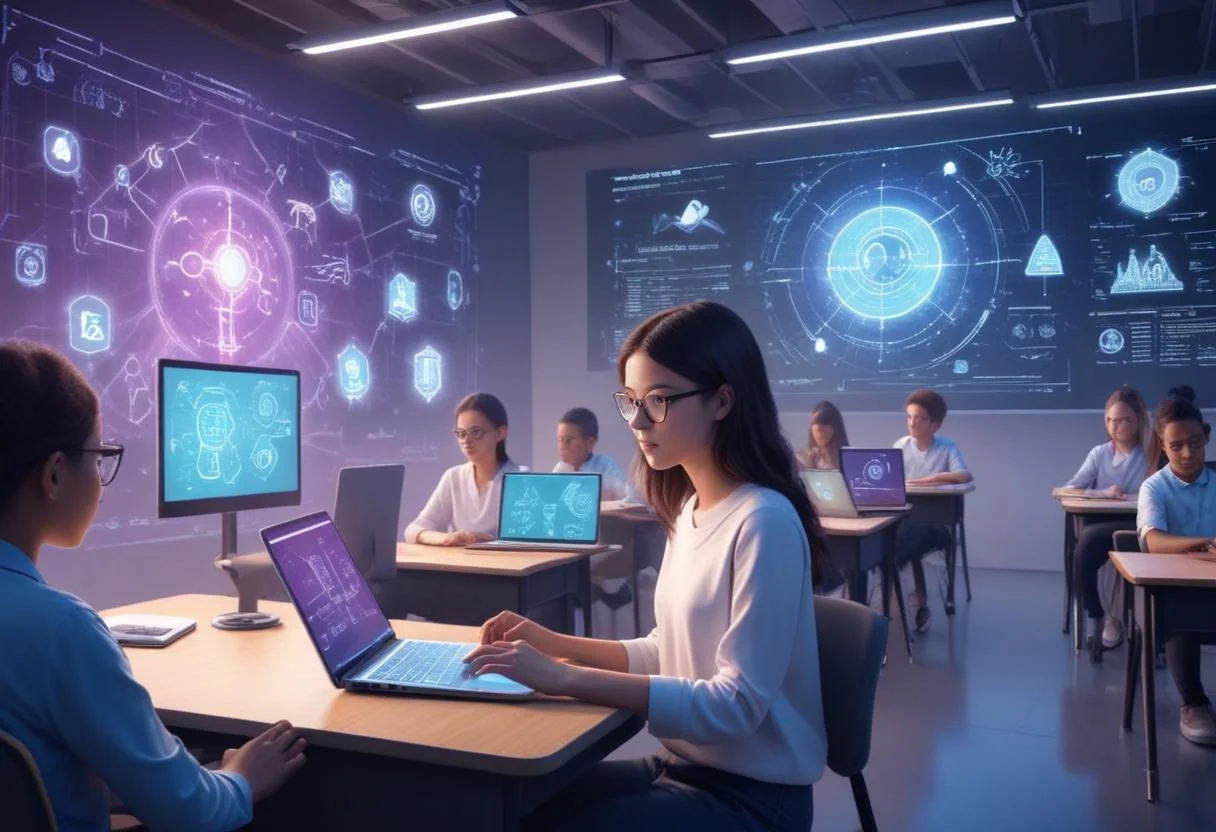Introduction
Welcome to the Future of Learning
As technology continues to evolve, it has significantly impacted various sectors, including education. The integration of Artificial Intelligence (AI) and User Experience (UX) design is transforming traditional educational methods, making learning more personalized, accessible, and engaging. This blog explores how these technologies are revolutionizing the educational landscape and the pivotal role of UxifyAI in this transformation.
The Dynamic Duo: AI and UX in Education
AI: The Brain Behind the Operation
AI is a powerful tool that can analyze vast amounts of data to understand and predict student needs. In education, AI algorithms can provide insights into student behavior, personalize learning content, and even automate administrative tasks. By leveraging machine learning, AI can adapt to individual learning styles, ensuring that each student receives the support they need to succeed.
UX Design: The Heart of User Experience
While AI handles the backend processing, UX design focuses on the frontend experience. A well-designed user interface is crucial for making complex systems approachable and intuitive. UX designers work to ensure that educational platforms are not only functional but also engaging and easy to navigate. This enhances the overall user experience, allowing students and educators to focus on learning rather than struggling with technology.
Personalized Learning: Your Education, Your Way
Custom-Tailored Learning Paths
Personalized learning is at the core of modern education. AI can create individualized learning paths by analyzing student data, such as performance metrics and learning preferences. This means students can receive customized content that addresses their specific needs and pace. For instance, an AI-powered tutoring system can identify areas where a student struggles and provide targeted exercises to help them improve.
A Seamless Journey with UX/UI Design
For personalized learning to be effective, the platform must be user-friendly. This is where UX/UI design comes into play. An intuitive design ensures that students can easily access their personalized content, track their progress, and interact with the platform. By reducing the cognitive load and making navigation straightforward, UX design helps keep students engaged and focused on their learning goals.
Breaking Barriers: Accessibility and Inclusivity
AI for All: Bridging the Accessibility Gap
One of the significant advantages of AI in education is its potential to make learning accessible to everyone. AI-powered tools, such as speech-to-text and language translation, can assist students with disabilities or language barriers. These technologies enable all students to access educational content and participate in learning activities, regardless of their physical or linguistic challenges.
Designing for Everyone
Inclusive design is a fundamental principle in UX. UX designers aim to create interfaces that cater to a diverse range of users, including those with disabilities. This involves considering factors such as color contrast, text size, and navigation options. By prioritizing accessibility in design, educational platforms can ensure that all students have a seamless and equitable learning experience.
UxifyAI: Innovators in Educational Technology
UxifyAI’s Cutting-Edge Solutions
UxifyAI is at the forefront of integrating AI and UX design in education. They have developed a suite of innovative tools that leverage AI to provide personalized learning experiences. For example, their AI-driven analytics platform helps educators understand student engagement and performance, enabling them to tailor their teaching strategies. UxifyAI’s commitment to user-centered design ensures that these tools are not only powerful but also easy to use.
Case Studies: Success Stories
UxifyAI’s solutions have been successfully implemented in various educational institutions, resulting in improved learning outcomes and student satisfaction. For instance, their AI-powered tutoring system has been used to provide personalized support to students in STEM subjects, leading to significant improvements in test scores. By combining advanced technology with thoughtful design, UxifyAI is helping to shape the future of education.
The Road Ahead: The Future of AI and UX in Education
What’s Next in EdTech?
The future of education is exciting, with emerging technologies like virtual reality (VR) and augmented reality (AR) set to play a significant role. These technologies, combined with AI and UX design, will create immersive learning experiences that go beyond traditional methods. Imagine students virtually exploring historical sites or interacting with 3D models in science classes. The possibilities are endless.
The Continuing Evolution of Learning
As AI and UX/UI design continue to evolve, they will undoubtedly further transform education. Future advancements may include more sophisticated AI systems capable of real-time emotional analytics, which could adjust teaching methods based on a student’s emotional state. UX design will also continue to innovate, focusing on creating even more engaging and interactive user experiences.
Conclusion
Recap: The Power of AI and UX/UI in Education
AI and UX design are revolutionizing education, making it more personalized, accessible, and engaging. By harnessing the power of data and prioritizing user experience, these technologies are creating a more inclusive and effective educational landscape. UxifyAI’s innovative solutions are leading the way, helping educators and students alike to achieve their full potential. As we move forward, the continued integration of AI and UX design will play a crucial role in shaping the future of education.



